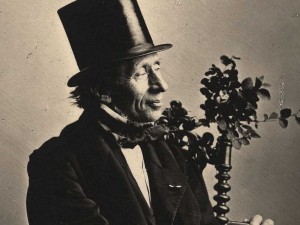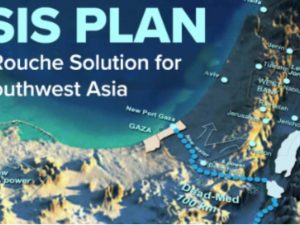Big Science Business Forum 2018 i København.
EIR interviews about science and industry, incl. fusion energy, etc. from
Big Science Business Forum 2018 in Copenhagen

København, 1. marts, 2018 – I forbindelse med det første europæiske Big Science Forum 2018 i København den 27.-28. feb., fik EIR’s kontor i København mulighed for at få flere betydningsfulde interviews om forskellige facetter af ITER’s tokamak fusionsenergi-projekt (ITER: International Thermonuclear Experimental Reactor), der er under opførelse i Frankrig. ITER-samarbejdet omfatter EU, USA, Rusland, Kina, Indien, Korea og Japan – hvilket svarer til mere end halvdelen af verdens befolkning.
ITER’s mål er at bygge en eksperimental reaktor, der kan opnå Q=10, dvs., at selve reaktoren vil producere ti gange så meget energi som output, i forhold til input-energien, i 2025 (eksklusiv energiforbrug uden for reaktoren), selv om det ikke vil blive forbundet til elektricitetsnettet. Det er det næste skridt i demonstrations-kraftværket, eller DEMO. En vigtig ting, som ITER-tokamakken vil blive brugt til, er at studere en »brændende plasma« – selve plasmas egen evne til at være med til at opvarme reaktionen i tillæg til udefrakommende varmekilder.
Tre af EIR’s interviews er på engelsk: med kommunikationsdirektøren for Fusion for Energy, EU’s gren af projektet; med dr. Luo Delong, generaldirektør for ITER, Kina; og så med en fransk industriel højteknologileverandør af ITER-komponenter.
Big Science Business Forum 2018 var et stort initiativ, som Danmarks Uddannelses- og Forskningsministerium har taget, med det formål at skabe det, LaRouche har kaldt en »videnskabelig drivkraft«; dvs., den videnskabelige forsknings evne til at skabe økonomisk vækst i den overordnede økonomi. Forummet samlede for første gang folk fra hele Europa. Under denne konference blev det muligt for de syv Big Science-institutioner, såsom Fusion for Energy, den Europæiske Rumorganisation (ESA), CERN-acceleratoren, et par andre neutron- og røntgen-acceleratorer, det Europæiske Molekylærbiologiske Laboratorium, det Sydeuropæiske Observatorium, mindre, tilknyttede institutioner i Europa og de high-tech-industrier, som i øjeblikket leverer, eller har potentiale til at kunne levere, komponenter eller ideer, at mødes og udveksle ideer om deres fremtidige investeringsplaner og indgå konkrete aftaler med industrien. Alle var overraskede, da flere end 1.000 mennesker tilmeldte sig arrangementet.
Flere af talerne, der repræsenterede de syv store forskningsinstitutioner, understregede, at menneskelig nysgerrighed, fascination, inspiration og motivering var afgørende for at forfølge stor videnskab og bekræftede således LaRouches centrale idé om, at menneskelig kreativitet er udgangspunktet for videnskab, teknologi, økonomi og vores civilisation som helhed.
Den danske forsknings- og uddannelsesminister Søren Pind indledte sin tale med at sige, at denne konference var »et kig ind i fremtiden«. Portugals Carlos Moedas, EU-kommissær for forskning, videnskab og innovation, sagde, at de tilstedeværende også måtte være politiske – og tale for politikere og vælgere om, hvorfor, det er vigtigt at investere i ’Stor Videnskab’ (Big Science). Som et negativt eksempel nævnte han eksemplet om en accelerator, der skulle have været bygget i Houston, USA, men som fik sit budget beskåret af USA’s Kongres. Fordi den nødvendige politiske vilje ikke eksisterede i USA, blev ekspertisen centreret omkring Europa.
En anden interessant, politisk pointe, som blev rejst af flere af talerne på konferencen, var betydningen af at fortsætte det videnskabelige samarbejde med lande som Rusland, på trods af politiske spændinger.
Ud over de engelsksprogede interviews lavede EIR fire korte, dansksprogede interviews med Big Science Denmark og tre high-tech industrileverandører om den effekt, Big Science har haft på at øge deres teknologiske niveau.
EIR-Danmarks YouTube-kanals Big Science interviews er udlagt på det danske Schiller Instituts website: https://schillerinstitut.dk/si/?p=23977
Efterfølgende vil nogle af talerne på Big Science Business Forum 2018’s plenarmøde også blive udlagt samme sted.
Foto: EIR’s korrespondent i København Michelle Rasmussen interviewer dr. Luo Delong, generaldirektør for ITER, Kina.
English:
EIR Interviews European and Chinese Fusion Energy Spokesmen in
Copenhagen
COPENHAGEN, March 1 (EIRNS) — In connection with the first
European-wide Big Science Business Forum 2018 in Copenhagen on
Feb. 27-28, {EIR}’s Copenhagen bureau was able to get several
important interviews on different facets of the International
Thermonuclear Experimental Reactor (ITER) tokamak fusion energy
project, under construction in southern France. The ITER
cooperation includes the EU, U.S., Russia, China, India, Korea
and Japan — more than half of the world’s population.
ITER’s goal is to build an experimental reactor which will
achieve Q=10, that is, that the reactor itself will produce 10
times the output of energy input in 2025 (not including energy
use outside of the reactor), though it will not be connected to
the electricity grid. That is the next step in the demonstration
power plant, or DEMO. One important thing the ITER tokamak will
be used for, is to study a “burning plasma,” — the ability of
the plasma itself to help heat the reaction, in addition to
outside heat sources.
Three of the {EIR} interviews are in English: with the
communications director for Fusion for Energy, the EU arm of the
project; with Dr. Luo Delong, the director general for ITER
China; and also with a very high-technology French industrial
supplier of ITER components.
Big Science Business Forum 2018 was a great initiative taken
by the Danish Ministry for Science and Education, to create what
LaRouche has called a “science-driver,” the ability of scientific
research to generate economic growth in the general economy. It
gathered people, for the first time, on a European-wide basis.
During this conference, the seven Big Science institutions, such
as Fusion for Energy, the European Space Agency, the CERN
accelerator, a couple of other neutron and x-ray accelerators,
the European Molecular Biology Laboratory, the European Southern
Observatory, smaller affiliated institutions in Europe, and the
high-tech industries which either currently, or potentially,
supply components or ideas, were able to meet to exchange ideas
about their future investment plans, and make concrete agreements
with industry. Everyone was surprised when over 1,000 people
registered for the event.
Several of the speakers representing the seven big science institutions underlined that human curiosity, fascination, inspiration and motivation were essential for the pursuit of big science, confirming LaRouche’s central idea that human creativity is the starting point for science, technology, economy and our civilization as a whole.
Danish Minister for Science and Education Søren Pind
prefaced his speech by saying that this conference was a “peek
into the future.” Portugal’s Carlos Moedas, EU Commissioner for
Research, Science and Innovation, said that the people in the
room also had to be political — to address politicians and
voters on why it is important to invest in Big Science. As a
negative example, he used the example of an accelerator that was
supposed to have been built in Houston, but which had its funding
cut by the U.S. Congress. Because the necessary political will
did not exist in the United States, the expertise became centered
in Europe.
Another interesting political point brought up by several
speakers during the conference was the importance of continuing
the scientific cooperation with countries such as Russia, despite
the political tensions.
In addition to the English-language interviews, {EIR}
conducted four short Danish-language interviews with Big Science
Denmark, and three high-tech industrial suppliers, about the
effect Big Science has had on raising their technological levels.
All of the EIRDanmark YouTube channel’s Big Science
interviews are also posted to the website of the Schiller
Institute in Denmark: https://schillerinstitut.dk/si/?p=23977
Some speeches during the Big Science Business Forum 2018’s
plenary session will also be posted there.
EIR (Executive Intelligence Review, Michelle Rasmussen) lavede følgende interviews den 27. februar 2018:
In English:
På engelsk
Fusion for Energy, Stavros Chatzipanagiotou
Fusion and China, ITER China, Luo Delong
Fusion and Industry, CNIM, Jean-Claude Cercassi, French ITER component supplier
På dansk
In Danish:
Big Science Danmark og tre firmaer
Nogle taler fra Plenary Session I:
Fusion for Energy
Richard Cobben, Head of ITER’s Delivery Department







